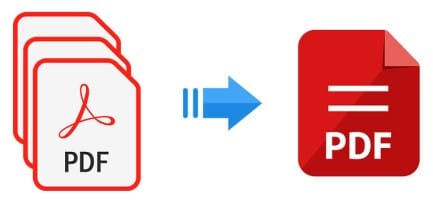Every day, millions of people sign up for different insurance policies for their and their families’ security. However, with the rapid growth in the insurance sector, the industry has reached a point where growth can only be achieved through insurance automation. At the moment, while applying for a policy or making a claim, customers have to deal with long and tedious processes most of which are carried out manually by insurance companies. This often leads to long delays and unsatisfactory customer service ultimately resulting in losses for the organization.
However, this trend has started to change. The introduction of applications that apply technologies such as Robotic Process Automation (RPA), Artificial Intelligence, and Machine Learning to insurance workflows has greatly reduced the time and efficiency with which insurance organizations can service their customers. Technologies such as RPA are expected to take the insurtech sector in the US to $261.6 billion by 2026.
Automation in the Insurance sector
RPA in the insurance sector has a multitude of use cases, automating data entry, record maintenance, facilitating new applications, and even claims management. Automation can make all of these workflows more efficient and error-free. Artificial Intelligence in the insurance sector is projected to grow from $4.2 billion in 2022 to $40.1 billion by 2030.
In a sector inundated with ineffective, paper-dependent procedures, the automation of insurance holds the potential to streamline tasks, ultimately revolutionizing the experiences of both customers and employees by saving time and effort. Insurance companies can use multiple intelligent automation technologies together to create even more use cases for their existing workflows. For example, by deploying robotic process automation along with conversational AI, insurance companies can create virtual agents that can answer customers’ first-level queries, gather basic information, and generate quotes.
Smart automation possesses the capability to address numerous challenges confronting insurers at present, ranging from laborious, paper-based claims processing to delays in customer support – and this is merely touching the tip of the iceberg.
Automate manual processes using Nanonet’s AI-based OCR software. Capture data from documents instantly. Reduce turnaround times and eliminate manual effort.
Benefits of Insurance Automation
Automation in the insurance sector can be very beneficial not just for the organization, since it will streamline workflows and reduce turnaround times thus saving on expenses and increasing profitability. But also for customers, as it can greater protection for their personal information, and reduce wait times for an application or claim they might need to make. Some of the major benefits of insurance automation are:
- Increased efficiency: The insurance industry traditionally has been managed by manually completing time-consuming tasks. However, through insurance automation, these time-consuming tasks can now be automated and finished in seconds. Leading to much greater operational efficiency and in turn lower operating costs for insurance organizations.
- Better customer experience: Through automation in the insurance sector, customers won’t need to wait for days to get answers to their queries. Rather they would be able to talk to virtual agents and get immediate answers and even quotes leading to much faster decision making on their part. In addition, customers won’t need to jump through hoops and chase multiple people to put a claim in for their insurance policy. It could all be done quickly with the help of streamlined workflows through RPA. The introduction of such changes through insurance automation will eventually lead to a much better customer experience resulting in increased revenue in the long run.
- Greater data protection: Insurance organizations are privy to quite a lot of sensitive customer information that needs to be protected both to abide by local laws and to ensure customer trust. Creating workflows in which customer forms and information are end-to-end managed through automated systems provides a much greater level of data security and also better document management for back office systems through optimized data collection and processing.
- Accurate fraud detection: Fraud has always been of concern for the insurance industry. But with the advent of newer technology, this is becoming a much bigger problem. However, through automation, insurance providers can now tackle fraudsters much better. With the help of AI, insurance providers will be able to recognize and preemptively stop such attacks resulting in huge savings in costs that such attempts can cause.
- Resource allocation and scalability: By introducing automation, insurance providers can drastically increase the speed at which they can serve their customers. This will not only result in better customer service but also afford the ability to scale and serve a much larger customer base without the need to increase the headcount by a lot.
Use Cases for Automation in Insurance
Automation in the insurance sector has numerous use cases. We will cover a few examples in this blog:
- Customer Service: Providing seamless customer service is paramount to all insurance providers. Through the use of AI and RPA, insurance providers can automate entire workflows, reducing wait times for customers and providing a much greater level of security for their private data.
- Faster processing of claims: Usually, filing and following up on claims is very time-consuming and a repetitive task. Insurance providers need to manually check and approve each document. In case of any back and forth, each time this activity needs to be re-done. This not only leads to a much greater claim approval time but also can lead to customer frustration. Insurance providers can automate most of this process by defining all acceptable criteria in the claim document in software such as Nanonets. These documents then can be automatically approved if the criteria match or else a flag can be raised asking for documents again. This can then reduce the turnaround time drastically leading to much faster claims processing.
- Policy management: Automating insurance processes simplifies policy management by streamlining the workflow for policy issuance and sending automated alerts for policy renewals. Insurers can even develop virtual assistants for policy management, guiding customers through the steps of updating or renewing their policies.
- Regulatory compliance: The regulatory environment within the insurance sector is intricate and continuously evolving. Ensuring compliance frequently involves overhauling entire business processes, posing a challenge for employees to stay abreast of these alterations. To support their agents, insurance firms can enhance success by implementing virtual assistants to navigate them through procedural changes. Additionally, companies can leverage insurance automation to establish and monitor compliance alerts, validate customer data, and produce regulatory reports, all contributing to adherence to regulatory requirements.
Conclusion
Automation stands as a cornerstone for the insurance industry, offering multifaceted advantages. It simplifies intricate processes, fostering efficiency and compliance with ever-evolving regulations. From streamlined policy management to accelerated workflows, automation enhances operational effectiveness. Virtual assistants empower agents, guiding them through dynamic processes and elevating customer service standards. This technological integration not only expedites response times but also ensures adaptability to industry shifts. Insurance companies benefit from the ability to swiftly navigate evolving landscapes, maintaining competitiveness. Ultimately, automation transforms the insurance sector, providing a comprehensive solution that optimizes processes, elevates customer experiences, and secures a resilient position within the dynamic market.
Automate insurance workflows and increase operational efficiency with Nanonets. Find out how Nanonets can help your business automate your insurance workflows easily.



